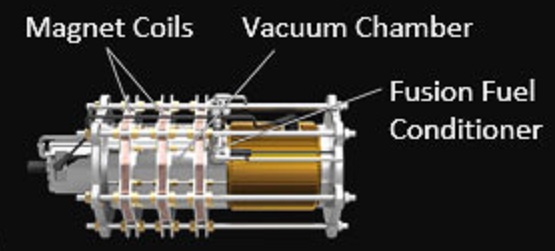Avalanche orbitron 2.jpg

Part 2 of 2 Parts (Please read Part 1 first)
Last year, Helion landed a huge five hundred-million-dollar round and TAE Technologies reported four hundred and ten million dollars in investments. Avalanche Energy’s five-million-dollar first round was led by Prime Impact Fund (now Azolla Ventures) and included Congruent Ventures, Chris Sacca’s Lowercarbon Capital and nearly a dozen small investors.
Langtry and Riordan credit the space sector for providing something like a model for the development of fusion. That field was once largely dominated by the federal research. Now private companies such as Blue Origin, SpaceX, and Rocket Lab are generating headlines that used to only be provided by NASA. VC funding could launch private fusion research projects in the same way. Riordan said, “I think that our timing was just perfect for that cusp of people saying, ‘I think we can do really wild, tough things in private industry faster and without the bureaucracy red tape’ and are willing to put money down on it.”
Langtry and Riordan met at Blue Origin (BO), Jeff Bezos’ space company in Kent, Washington. Both of them worked on rocket propulsion systems. They appreciated the BO culture that encouraged employees to take audacious risks and learn from their mistakes. However, recently the existential and increasing visible of impact of climate change has brought their interests back to Earth. Langtry said, “There’s no point in doing a space company if the Earth is on fire.”
Langtry had been exploring fusion more as his hobby with an eye to using reactors as a propulsion system for space craft. As the two refocused on Earth-bound applications, they set some boundaries for their fusion solution. They did not want to employ giant lasers or massive magnets.
While researching the fusion field, Langtry found a graduate thesis from a Lockheed Martin researcher named Tom McGuire. The thesis included open source code for simulations for an electrostatic fusion reactor. McGuire’s idea became the basis for AE technology.
The startup is constructing its fusion generator prototype out of a mixture of off-the-shelf and custom-made parts. They are using something called a Knight trap. It is a type of orbiting ion trap as the core of the reactor. The team created ion guns to fire deuterium ions into the ion trap. A high voltage generator creates conditions in the reactor that produce the plasma in which the ions can orbit, collide, fuse and release energy.
The team has generated energy in the form of high speed neutrons. They will be adding magnets to the system to create a higher density reactor that produces more energy. They also need to establish a means for transforming the heat energy that is produced into the electrical energy.
Brieda, the outside expert, said, “There are all these small technical challenges. Until you build something and demonstrate it, it’s still a research project.”
The most difficult technical hurdle, the AE team said, will be creating sufficiently high voltage on the order of six hundred thousand volts in a small space to make the whole thing go.
Riordan said, “We learn and make progress on something that looks, from the big picture, so insurmountable. But there’s little baby steps along the way [that] are empowering, exciting to people. And they’re marching towards our end goal.”